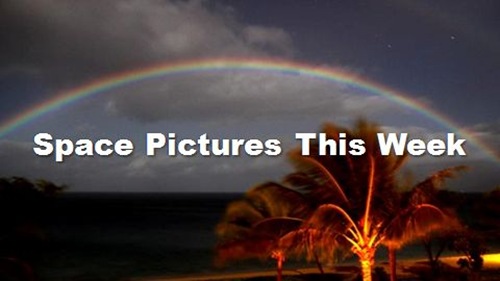
Space Pictures This Week: Double Moonbow, Twilight Comet
By Jane J. Lee, National Geographic News, 4 March 2013.
By Jane J. Lee, National Geographic News, 4 March 2013.
A solar eruption leads to an Earthly discovery and a comet lights up the night in this week's best space pictures.
1. Illuminating Discovery
In a photo released by NASA on February 28, an enormous solar prominence erupts from the surface of the sun, blasting particles and a shock wave toward Earth. (Related: "Solar "Tsunami:" Giant Double Sun Eruption Caught on Video.")
Scientists think the wave of material was responsible for the formation of a radiation belt encircling the Earth that no one had ever seen before.
Normally, the Earth is surrounded by two doughnut-shaped radiation belts known as the Van Allen belts. Researchers have known about them since the 1950s. With the launch of the Van Allen probes in August 2012, astronomers hoped to get a better picture of these two areas of radiation.
What they found was a third region of radiation that they think the August 31, 2012, eruption - pictured above - produced. This new belt only lasted for four weeks before another shock wave emitted by the sun destroyed it. (See more pictures of solar activity and space weather.)
2. Twilight Comet
Photograph by Alex Cherney, TWAN
Sky-watching fans in the Southern Hemisphere got a sneak peek at the recently discovered comet PanSTARRS, pictured here at twilight above Melbourne, Australia, in February.
Stargazers in the Northern Hemisphere will get a chance to see the comet as it comes into view this month. (Related: "Comet PanSTARRS: How to See it in March 2013.")
3. Laser Light
Researchers with the European Southern Observatory's Very Large Telescope (VLT) test their latest laser, PARLA, in an image released February 25.
Astronomers with the VLT in Chile will use the laser to calibrate the telescope to correct for distortions in their images due to the Earth's atmosphere. It will allow them to move adjustable mirrors on the telescope in real time to produce much sharper images. (Read about giant telescopes in an article in National Geographic magazine.)
4. Crater Cupcake
In an image released February 27, NASA's Lunar Reconnaisance Orbiter captures the Schiaparelli E crater on the moon.
Located in Oceanus Procellarum, on the western edge of the near side of Earth's moon, the impact crater shows smoother regions on its floor and areas littered with debris. Light-coloured boulders litter the crater like powdered sugar on a cupcake.
Schiaparelli E is named for the 19th-century Italian astronomer Giovanni Schiaparelli, whose observations of "canals" on Mars sparked the popular idea that intelligent life on the red planet dug channels across the surface to irrigate their world. (Related photos: "Looking Back at Visions of Life on Mars.")
5. Smoke Signal
A brush fire in southeastern Australia sends a plume of smoke wafting south over the Bass Strait (map) in an image released February 28.
Captured by NASA's Moderate Resolution Imaging Spectroradiometer (MODIS) aboard the Terra satellite, lightning sparked several fires, two of which merged into this large conflagration near Grampians National Park. (Related photos: "Wildfires Scorch Australia Amid Record Heat.")
6. Double Lunar Rainbow
A double lunar rainbow, or moonbow, arcs over the Pacific Ocean in this photograph taken February 26 from Kaanapali, Maui (map).
Rainbows form when water droplets refract sunlight into its component colours. The same principle applies to lunar rainbows, but instead of using direct sunlight, moonbows form when reflected sunlight from the moon is refracted by atmospheric moisture. (Watch a video of moonbows in Yosemite National Park.)
Since the reflected light from the moon is fainter than direct sunlight, colours are harder to see with the naked eye in moonbows. Long exposure photographs, such as the 20-second exposure pictured, enable us to see the colours of the rainbow. (See related photos of a quadruple rainbow.)
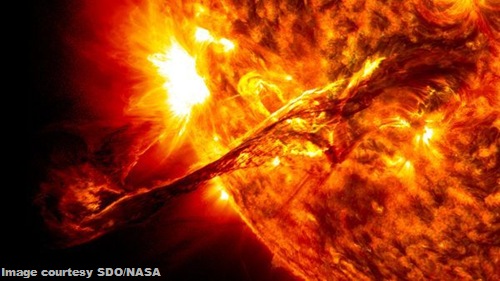

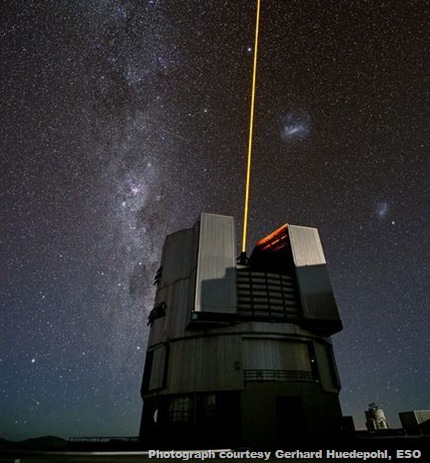
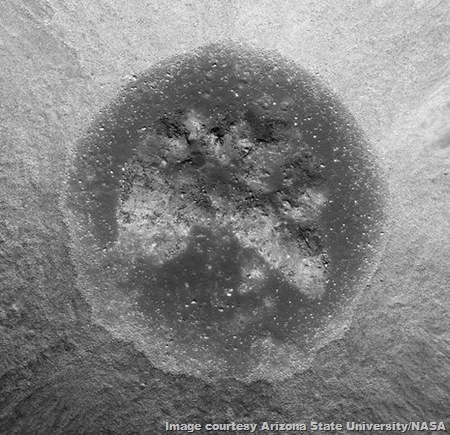
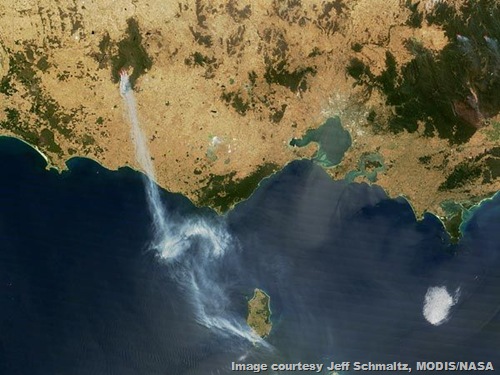

No comments:
Post a Comment
Please adhere to proper blog etiquette when posting your comments. This blog owner will exercise his absolution discretion in allowing or rejecting any comments that are deemed seditious, defamatory, libelous, racist, vulgar, insulting, and other remarks that exhibit similar characteristics. If you insist on using anonymous comments, please write your name or other IDs at the end of your message.